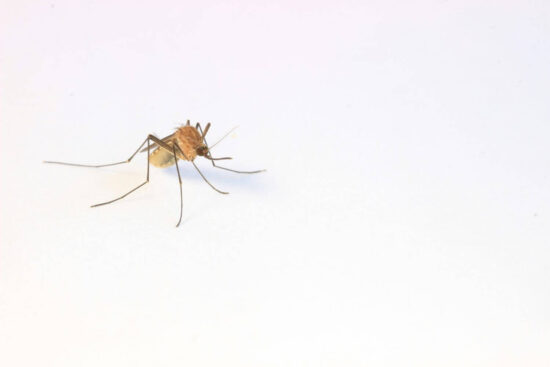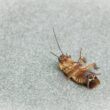Nothing ruins a peaceful evening at home quite like the annoying buzz of mosquitoes. These tiny pests somehow find their way inside, turning your comfortable living space into a battleground. Getting mosquitoes out of your house doesn’t have to be complicated or involve harsh chemicals that could harm your family and pets.
Mosquitoes enter homes through the smallest openings, searching for food, water, and comfortable places to rest. They love dark, humid spots like bathrooms, laundry rooms, and areas under furniture. Once inside, they can quickly become a bigger problem if they find standing water to breed in.
The good news is that getting mosquitoes out of your house can be accomplished using safe, effective methods that work fast. This guide covers techniques that range from simple prevention to more intensive treatments. Start with the gentler methods first, then move to stronger solutions if needed.
1. Install and Repair Window and Door Screens
The best defense against mosquitoes is stopping them from getting inside in the first place. Window and door screens create a physical barrier that keeps mosquitoes out while still letting fresh air flow through your home.
Check all your screens for holes, tears, or loose areas where mosquitoes could squeeze through. Even tiny holes the size of a pinhead can let mosquitoes inside. Fix small holes with clear nail polish or screen repair patches. Replace screens that have large tears or multiple holes.
When buying new screens, choose ones with a mesh density of 20×20 or finer. This tight weave blocks even the smallest mosquitoes. Magnetic screens work great for renters or anyone who doesn’t want to drill holes. They attach with strong magnets and can be easily removed when not needed.
Don’t forget about gaps around your screens and doors. Use weatherstripping around windows and doors to seal any openings. Caulk gaps around window frames, door frames, and anywhere pipes enter your home. Install door sweeps under exterior doors to block the space at the bottom.
These simple fixes create a solid barrier that makes getting mosquitoes out of your house much easier because fewer will get in.
2. Use Electric Fans for Air Circulation
Mosquitoes are surprisingly weak fliers. A gentle breeze that barely moves your hair can make it nearly impossible for mosquitoes to fly in a straight line or land on you. This makes fans one of the simplest and most effective tools for mosquito control.
Place fans near seating areas, beds, and entry points like doors and windows. Oscillating fans work well because they cover a wider area, but stationary fans can be positioned to blow air exactly where you need it. Set fans on medium to high speed for best results.
Position fans so they blow air away from you rather than toward you. This creates a barrier of moving air that mosquitoes can’t cross. Ceiling fans, box fans, and pedestal fans all work well for this purpose.
Consider installing a fan near your front door to create an air curtain. This moving wall of air makes it much harder for mosquitoes to fly inside when you open the door. The same technique works for patio doors and other frequently used entrances.
Fans use very little electricity and provide the bonus of keeping you cool. They’re completely safe around children and pets, making them an ideal first line of defense against indoor mosquitoes.
3. Eliminate Standing Water Sources
Mosquitoes need water to breed, and they can develop from egg to adult in as little as seven days. Getting mosquitoes out of your house means cutting off their breeding cycle by removing standing water.
Check your home weekly for water that has collected in various places. Empty water from plant saucers, pet bowls, and decorative containers. Even small amounts of water in bottle caps or jar lids can become mosquito nurseries.
Fix leaky pipes, faucets, and any other sources of dripping water. Clean out clogged gutters and drains that might hold water. Replace the water in vases and flower arrangements regularly, or add a few drops of vegetable oil to the surface to prevent mosquito breeding.
Look for hidden water sources in areas like basements, laundry rooms, and under sinks. Check for condensation on pipes or air conditioning units that might create puddles. Make sure your washing machine drains properly and doesn’t leave standing water.
Don’t forget about outdoor areas near your home. Empty kiddie pools, buckets, and wheelbarrows. Clean out bird baths weekly or install a small fountain to keep the water moving. Mosquitoes won’t lay eggs in moving water.
4. Apply Essential Oil Repellents
- Plant-based peppermint oil formula repels pests naturally
- Safe to use around pets, kids, and indoor living spaces
- Great for garages, attics, baseboards, and outdoor areas
- Fresh mint scent with long-lasting protection
Many essential oils naturally repel mosquitoes without using harmful chemicals. These oils work by masking the scents that attract mosquitoes and confusing their ability to find targets.
The most effective oils for mosquito control include citronella, lemon eucalyptus, peppermint, lavender, and tea tree oil. Create a spray by mixing 10 to 15 drops of essential oil with water in a spray bottle. Shake well before each use.
Spray this mixture around window frames, door frames, and other entry points. You can also spray it on curtains, furniture, and other surfaces where mosquitoes might land. The scent will fade over time, so reapply every few days for continued protection.
Essential oil diffusers work well for treating larger areas. Add a few drops of mosquito-repelling oil to your diffuser and let it run in rooms where you’re having mosquito problems. The scent will spread throughout the room and create an invisible barrier.
For skin application, always dilute essential oils with a carrier oil like coconut oil or olive oil. Use about 3 to 5 drops of essential oil per ounce of carrier oil. Test on a small area of skin first to make sure you don’t have any allergic reactions.
5. Create DIY Mosquito Traps
Homemade mosquito traps can catch mosquitoes using ingredients you probably already have at home. These traps work by attracting mosquitoes with appealing scents or carbon dioxide, then trapping them so they can’t escape.
The sugar and yeast trap works especially well because it produces carbon dioxide, which mosquitoes love. Cut a plastic bottle in half and mix 1/4 cup of brown sugar with 1 cup of hot water in the bottom half. Once it cools, add a gram of yeast. Place the top half upside down inside the bottom half to create a funnel. Mosquitoes will fly in but can’t find their way out.
Vinegar traps use the sweet smell of apple cider vinegar to attract mosquitoes. Mix equal parts apple cider vinegar and water in a shallow dish. Add a spoonful of sugar and a few drops of dish soap. The soap breaks the surface tension of the water, so mosquitoes that land on it will sink and drown.
Soapy water traps work great near lights. Fill shallow dishes with water and add a few drops of dish soap. Place these near lamps or windows where mosquitoes gather. The light attracts them, and the soapy water traps them.
Fan traps combine the power of moving air with physical capture. Attach a piece of window screen to the back of a box fan using zip ties or strong tape. The fan will suck mosquitoes against the screen where they get stuck and eventually die.
6. Use Natural Aromatic Deterrents
Strong natural scents can effectively repel mosquitoes by overwhelming their sensitive smell receptors. These household items create an environment that mosquitoes want to avoid without using any synthetic chemicals.
Fresh garlic cloves work surprisingly well as mosquito repellents. Place whole, unpeeled cloves near windows, doors, and other entry points. You can also make garlic spray by boiling several cloves in water, then spraying the cooled liquid around problem areas. The sulfur compounds in garlic are particularly offensive to mosquitoes.
Camphor creates a strong scent that mosquitoes hate. Light a small piece of camphor in a closed room and let it burn for about 20 minutes, then ventilate the area thoroughly. Never leave burning camphor unattended, and make sure pets and children are out of the room while it burns.
Lemon and clove combinations work as natural repellents. Cut fresh lemons in half and stick whole cloves into the flesh. Place these in bowls around rooms where you’re having mosquito problems. Replace them every few days when the scent starts to fade.
Indoor plants like basil, mint, and marigolds naturally repel mosquitoes. Place potted versions near windows and doors where mosquitoes might enter. These plants not only help with pest control but also add natural beauty to your home.
Coffee grounds can be burned safely on patios or near open doors to create a mosquito barrier for indoor spaces. Dry used coffee grounds completely, then burn them in a fire-safe metal container. The smoke and coffee scent disrupt mosquito navigation. Only use this method outdoors due to fire safety concerns.
7. Control Indoor Environment
Making your home less attractive to mosquitoes involves controlling two key factors: humidity and lighting. Small changes to your indoor environment can make a big difference in getting mosquitoes out of your house.
Mosquitoes love humid environments, so keeping your home’s humidity below 50% makes it much less appealing to them. Use dehumidifiers in basements, bathrooms, and other naturally humid areas. Run exhaust fans while cooking and showering to remove excess moisture from the air.
Fix any moisture problems promptly. Address condensation on windows and pipes, and make sure your air conditioning system drains properly. Good ventilation throughout your home helps maintain proper humidity levels and makes the environment less comfortable for mosquitoes.
Lighting choices also affect mosquito attraction. Replace white light bulbs with yellow LED bulbs, which are much less attractive to mosquitoes. Install outdoor lights away from doors and windows rather than directly above them, so they draw mosquitoes away from entry points instead of toward them.
Use motion sensor lights to minimize the time your lights are on. Mosquitoes are most active during dawn and dusk, so reducing unnecessary lighting during these times helps avoid attracting them to your home.
Close curtains and blinds in the evening when indoor lights are on. This prevents light from escaping and attracting mosquitoes to your windows and doors.
8. Apply Commercial Indoor Insect Sprays
When natural methods aren’t enough, commercial insect sprays designed for indoor use can provide quick relief from mosquito problems. These products kill mosquitoes on contact and provide lasting protection in treated areas.
Choose EPA-registered products that are specifically labeled for indoor use against mosquitoes. Look for active ingredients like permethrin, DEET, or pyrethrin, which are effective against mosquitoes but safe when used according to label directions.
Focus your spraying on areas where mosquitoes like to rest during the day. These include dark, humid spots like under furniture, in closets, near sinks, in laundry rooms, and around showers. Mosquitoes also hide behind curtains and in corners where walls meet ceilings.
Always follow the label directions exactly for application rates and safety precautions. Ensure good ventilation while spraying and for several hours afterward. Keep children and pets away from treated areas until the spray has dried completely.
Remove or cover food, dishes, and food preparation surfaces before spraying. Never spray directly on surfaces that come into contact with food. Some products provide residual protection for several days, so you don’t need to reapply immediately.
Store insect sprays safely away from heat sources and out of reach of children and pets. Never use outdoor sprays indoors, as they can be dangerous in enclosed spaces.
9. Use Electronic Mosquito Control Devices
- 4200V electric grid zaps mosquitoes, flies, moths, and gnats fast
- Covers up to ½ acre—great for patios, gardens, and camping
- Chemical-free pest control, safe around pets and kids
- Easy setup with hanging loop, removable tray, and replaceable bulb
Electronic devices can help with mosquito control by attracting, trapping, or repelling these pests using light, sound, or electric currents. These devices work well as part of a comprehensive mosquito control strategy.
UV light traps attract mosquitoes with special bulbs that emit ultraviolet light. Place these devices in areas where you’ve noticed mosquito activity, but away from where people spend time. This prevents the traps from attracting mosquitoes to you instead of away from you.
Electric bug zappers kill mosquitoes instantly when they touch the electrified grid. Choose models designed for indoor use and place them away from food preparation areas. Clean the collection trays regularly to maintain effectiveness and prevent odors.
Ultrasonic repellers claim to drive away mosquitoes using high-frequency sounds. While the scientific evidence for their effectiveness is limited, some people find them helpful as part of a multi-method approach to mosquito control.
All electronic devices require regular maintenance to work properly. Clean UV bulbs and replace them according to manufacturer recommendations. Empty collection trays and clean away dead insects that might block airflow or light output.
Position electronic devices carefully to maximize their effectiveness. Follow manufacturer instructions for placement height and distance from walls. Keep them away from areas where children might touch them.
10. Use Mechanical Removal and Foggers
Sometimes you need to take direct action against mosquitoes that are already in your home. Mechanical removal methods and foggers can quickly reduce mosquito populations when other methods aren’t working fast enough.
Handheld vacuum cleaners work great for sucking up individual mosquitoes. They’re especially useful for getting mosquitoes off walls and ceilings where they’re easy to see. Empty the vacuum immediately after use and dispose of the contents in a sealed bag.
Fly swatters remain one of the most reliable tools for killing individual mosquitoes. Look for electric fly swatters that kill mosquitoes on contact. These work especially well for mosquitoes that are flying around or resting on surfaces.
Sticky traps can be placed in areas where mosquitoes are active. These work best in corners and near windows where mosquitoes tend to rest. Replace them regularly as they fill up with insects.
Indoor foggers should be a last resort for severe mosquito problems. Choose products with natural ingredients like geraniol or rosemary oil rather than synthetic chemicals when possible. Before fogging, remove or cover all food, dishes, utensils, and personal items.
Follow fogger directions exactly for room size and application time. Leave the treated area for the recommended time period, usually several hours. Ventilate thoroughly before returning, and clean any surfaces that come into contact with food.
11. Call The Pros
When mosquito problems persist despite your best efforts, it’s time to call in the professionals. Pest control experts have access to commercial-grade products and techniques that aren’t available to homeowners.
Professional pest control technicians start with a thorough inspection of your home to identify entry points, breeding sites, and factors that are attracting mosquitoes. They can spot problems that you might miss and recommend specific solutions for your situation.
Licensed professionals use integrated pest management approaches that combine multiple techniques for maximum effectiveness. This might include targeted spraying, breeding site elimination, exclusion methods, and ongoing monitoring.
Professional treatments often last longer than DIY methods and come with guarantees. Many companies provide follow-up visits to ensure the treatment is working and make adjustments if needed.
Pest control services also provide valuable education about preventing future mosquito problems. They can recommend specific changes to your home and yard that will make long-term mosquito control easier.
When choosing a pest control company, look for licensed, insured professionals with good reviews. Ask about their specific experience with mosquito control and what methods they use. Get quotes from multiple companies to compare services and prices.
Closing Thoughts
Getting mosquitoes out of your house is definitely achievable using the right combination of methods. Start with the safest, most natural approaches like screens, fans, and essential oils. These prevention-focused techniques work well for minor mosquito problems and create a foundation for long-term control.
For more serious infestations, combine multiple methods for better results. Natural deterrents work well with mechanical traps, and environmental controls become more effective when paired with targeted treatments.
Remember that consistency is key to successful mosquito control. Check and maintain your screens regularly, eliminate standing water weekly, and reapply natural repellents as needed. Getting mosquitoes out of your house requires ongoing attention, but the methods in this guide make it manageable.
Most importantly, don’t wait until mosquito problems become severe. The earlier you start implementing these techniques, the easier it will be to maintain a mosquito-free home. With persistence and the right approach, you can reclaim your living space from these unwanted pests and enjoy comfortable, bite-free evenings at home.




